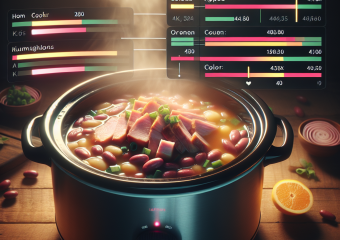Food literacy and the impact on your health – Northern Virginia Daily

STEPHENS CITY – Associate Virginia Cooperative Extension agent Hannah Copp strives to help residents across the Shenandoah Valley better understand food literacy and how it links to the nation’s food system, especially in rural communities where access to healthy options can be limited due to transportation, salary, and even education.
“Food literacy is understanding the impact of your food choices on your health,” explained Copp. “The environment and economy and understanding that the impacts aren’t equitable across the board.”

Food literacy can impact anyone, she said, adding that it typically impacts more individuals or families with limited resources. It also doesn’t discriminate on geography. Copp said food literacy can just as easily affect someone who lives in a city versus a rural community.
“Understanding food literacy is understanding what the food is doing for your body, what it’s doing for your health, the environment. The fossil fuels it takes to get a tomato to Walmart as opposed to a tomato at a farmers market.”
According to the Centers for Disease Control and Prevention’s Dietary Guidelines for Americans 2020-2025, a healthy eating plan emphasizes fruits, vegetables, whole grains, and fat-free or low-fat milk and milk products. It should also include a variety of proteins, such as poultry, eggs, beans, soy products, nuts, and seeds. It also stresses the importance of consuming less added sugars, salt, saturated fats, trans fats, and cholesterol.
Recognizing that only some in the valley have access to fresh food, Coop is diligently playing her part in helping residents learn how they can incorporate healthy food choices into their diet, whether through educational classes or year-long programs.

“… helping them understand what healthy eating is by helping them realize that maybe they aren’t following healthy guidelines – especially if they don’t know about them.”

For Copp, it begins with a conversation.
“It’s sad,” she said. “Some of us learned the basic food pyramid in school but for one reason or another, we’re either not following it, have forgotten it, or never learned it.”
Take broccoli – rather than enjoying it straight from the ground, Copp said the hearty vegetable is topped with excess cheese, decreasing its nutritional value. The same with sugary drinks. Rather than consuming the necessary daily intake of water, families are drinking soda, energy drinks and fruit drinks at alarming rates.
“Eating our fruits and vegetables is important. It’s better to eat fresh than out of a can,” she said. “It really comes down to education, I think. It’s complex. It’s multi tiered on how we can get information out to people.”
Based on research Copp performed, she said that only 4% of American children eat their recommended serving of vegetables. Only 1 in 10 adults consume their daily intake, according to the CDC website.
“It’s one thing for us to know that we should be doing it, but it’s another thing to know how much we should be eating.”
Knowing the nutrition side is one thing, but understanding, Copp said, comes down to the food system.
“Obesity, climate change, unhealthy diets, as well as food safety concerns,” she said. “Food literacy is just a part of our food system.”
But there’s a more obvious reason than knowing how to read a nutrition label.
“Accessibility,” said Copp, who explained that factors such as transportation, salary, and the know-how to grow something like a tomato plant play a prominent role in food literacy.
“Not everyone across the valley has access to affordable, healthy food choices, especially those who live in food deserts,” she said, explaining that a food desert is an area where healthy food is expensive or unavailable.
“As a community, across the northern Shenandoah Valley, we need more farmers markets like John Henry’s General Store that offer local. And more importantly, make it accessible and affordable.”
Earlier this spring, the general store, which participates in the federally funded Supplemental Nutrition Assistance Program (SNAP), announced that those wishing to plant vegetable gardens are now eligible to use their electronic benefits transfers (EBT).
“If more places accepted those programs, then more people would have access to the fresh produce that they need, including those nutrients.”
Not everyone has the time or can travel so many miles to put food on their dinner tables, she added.
Using Woodstock as an example, Copp said residents have ample access to healthy choices including Food Lion, Walmart and the Dollar Store, as well as local farmers markets like Mowery Orchard. But for residents who live in Toms Brook, their only access to fresh fruits and vegetables is at the Dollar General. For more food items, residents must travel out of town.
“That’s why we’re so excited about ShenGO,” Copp said of the regional public transit system in Shenandoah County. “And we love that John Henry’s has incorporated that into their business plan with free fare to and from the store.”
Through the extension office, Copp offers educational opportunities for residents to learn things such as canning, which she said ensures residents have healthy food on their shelves for two years.
She also teaches courses on balanced living for those with diabetes and meal planning, a topic Coop is passionate about as she believes it can help those struggling with eating properly.
“There are bigger ramifications to eating things like snack cake every day than most people realize,” said Copp, who said for her, it comes down to educating herself as well as the community.
“We can’t educate the entire world, but as much as we can do, hopefully, we can take away the stigma and will eventually disperse to more and more people.”
Extension Info





